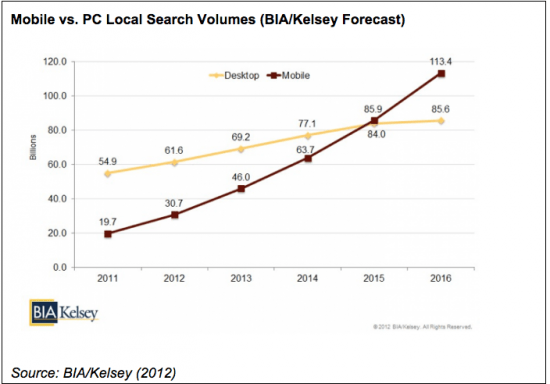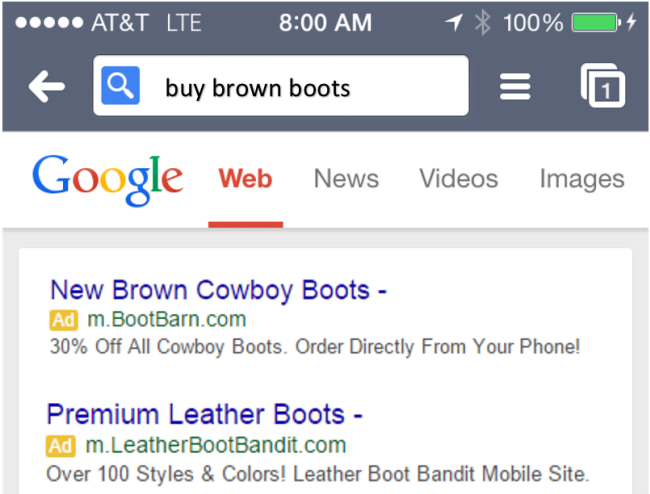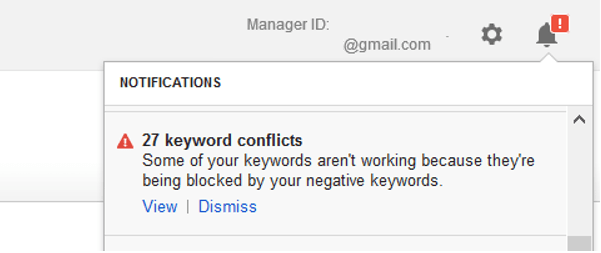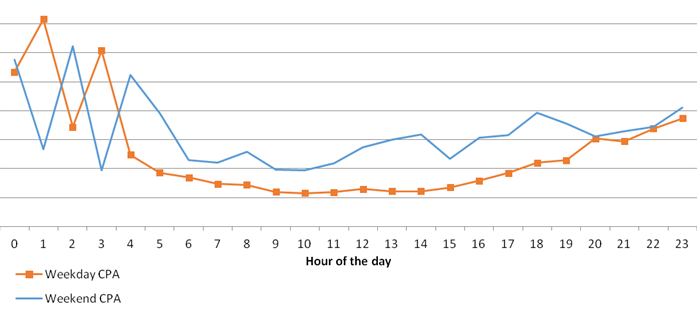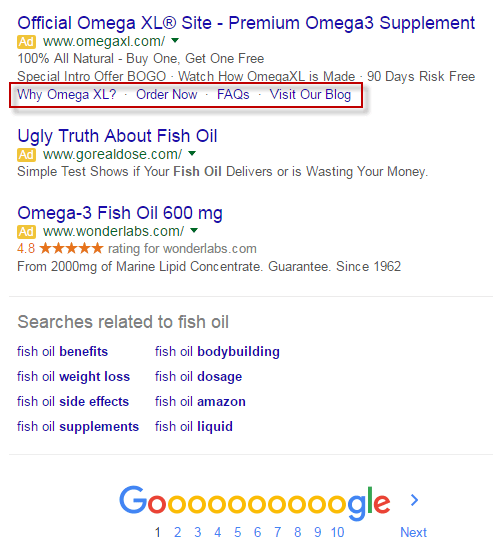
Spring Cleaning! 4 PPC Account Audit Tips To Save You Money
April 9, 2018
It’s that time of year again. You’re pulling out your colorful shorts and lighter sweaters. You’re looking at your disaster of a pantry and asking yourself if you should impulsively buy that labeler. Your junk drawer has hit the point where it’s starting to give you an eye twitch every time you open it. You can’t fight the organizational urges any longer – it’s time for spring cleaning!
But don’t stop at cleaning your closets, your pantries, your drawers –clean up your PPC account too! Get rid of all those moolah gobblers in your campaigns that have been lurking for far too long in the dark, dusty corners. Start this next quarter off right with a handful of simple account changes you can make that will cut inefficient costs and drive better results.
Are you ready to do some clean-up? Ask yourself these four questions as you start your spring PPC account auditing.
#1: Are You Targeting The Right Devices?
To Mobile or Not to Mobile?
That is the question. You’ve likely read the proclamation “This is the year of mobile!” so many times in SEM articles that it now makes you nauseated. But ever since Google officially confirmed that mobile searches surpassed desktop searches in 2015, we’ve all finally had to sigh deeply, admit this whole mobile thing wasn’t just a buzzword, and really evaluate our device targeting strategy.
The scary part is that many paid search marketers leave their mobile targeting equal to desktop – essentially opting into paying for clicks on an additional device without even first evaluating if it makes sense for them to do. More times than I can count, I’ve pulled a new client’s historical device report only to find that mobile performance is a dud (usually because mobile bidding wasn’t actively being managed).
The moral of the story is that mobile targeting isn’t right for every advertiser. For some it’s like burning money, for others it’s a great growth opportunity. So the first things you need to ask yourself are:
- Should I be targeting mobile? Is my product accessible or functional on a mobile device? Or is my service offering something that should be made available to a mobile searcher?
- What’s my mobile experience like? Is my site design responsive? Is there a provided option to complete the conversion path on a mobile device?
- Has mobile performed well for me previously? Have I tested and seen success with mobile targeting in the past? What does mobile performance look like for me via other channels (Organic, Social, Display?)
What Should My Mobile Bid Modifier Be?
Now, the even trickier part – the step that honestly makes you feel like you’re taking a complete shot in the dark: What should your mobile bid modifiers be set at? Where do you start? Do you slowly open up, from -90% to -80% to -70%…? Or do you immediately set things equal to desktop and cross your fingers?
Neither. Google actually has a great formula you can use as a baseline for what your mobile bid modifiers should be. If you’re already opted into mobile and have historical device performance for your campaign, you can insert that data to calculate. If you’ve never targeted mobile, you can pull your organic device-specific performance from Google Analytics as a jumping off point.
So for example, if my campaign’s historical mobile conversion rate over the last 30 days was 2.3%, and my historical desktop conversion rate was 5.3%, a good mobile bid modifier percentage to start with would be around -53%.
Do You Have Mobile Messaging In Your Ads?
So you are opted into mobile, eh? This mobile targeting is old news to you. You’ve had a sophisticated mobile bidding strategy from the start.
But the question is – are you messaging for mobile?
- Do all your ad groups have at least one active mobile-preferred ad?
- Does that ad use mobile CTAs and/or copy?
- Have you tested display URLs like m.domain.com?
- Do your mobile-preferred ads all have Description Line 1’s ending in punctuation so as to keep your ad from being truncated on the mobile SERP?
Elevating your mobile performance to the next level means regularly auditing, creating, and testing mobile copy. This one can get skipped or looked over during campaign launch time-crunches, but it’s an important piece of your device targeting strategy to increase relevancy, improve CTR, raise your Quality Scores, and ultimately reduce your actual cost per click.
#2: Are You Matching To Relevant Queries?
Branded vs. Non-Branded Queries
What really kills me during PPC account audits is when I find campaigns that are a blend of branded and non-branded keywords. These two keyword types perform very differently, and should be managed and budgeted separately. Lumping branded keywords into non-branded ad groups means showing ad copy that’s not as tightly relevant, hurting CTR and providing no help to cutting down CPCs. Plus, it puts limitations on your ability to bid scalably when both keyword categories are intermixed under the same campaign umbrella.
So do yourself a favor and split out branded and non-branded campaigns to save yourself a lot of headache (and money) down the line.
Negative Keyword Fencing
I’ve heard this technique called by many names, but “fencing” is my personal favorite. This is the strategy of applying Phrase and/or Exact match negative keywords to campaigns or ad groups in order to funnel queries to the most relevant keyword.
Here’s an example. I have two separate ad groups:
- Boots
- Brown Boots
I want my boot-specific queries to match to my Boots ad group. However, if I’m not careful, a higher bid “Boots” or +Boots keyword in that ad group may outbid my “Brown Boots” keyword in the other ad group. Therefore, I can add “Brown” as a negative phrase match to my Boots ad group to fence off brown boot queries to match to the ad group with the most relevant copy.
Negative fencing takes time, dedication, and patience to set up. Some account managers will apply them in a very granular, methodical fashion. Others will focus on just adding them selectively so that their Broad match keywords don’t absorb all relative query volume. The best step you can take during your account audit process is to pull a Search Terms report that includes the Keyword column, taking a look at your highest-spending queries and watch keywords they’re actually matching to. From there, you’ll know where the cost damage is most notable and can implement a “fencing” plan!
Review Search Term Reports & Negative Keyword Conflicts
The biggest offender you find during account auditing? It’s the lack of negative keywords. Nothing makes you face-palm harder than finding little to no negative keywords assigned to campaigns (especially high-spending campaigns). Another one that brings tears to the eyes? When a negative keyword has been added and is completely blocking ads from showing on a previously top-converting keyword. Yikes!
But we’ve all done it or caught it. The goal is to fix it as soon as possible. So as part of your spring cleaning, take the time to set up regular search term report reviews, as well as time each month to audit your negative keyword conflicts (found in the Alerts section of the AdWords UI).
#3: Are You In The Right Place at the Right Time?
Default settings can be dangerous, and paid search managers can end up accidentally launching campaigns targeting the entire world, all languages, or all hours of the day. It’s pretty frustrating to later discover you were accidentally targeting a region you don’t deliver to, or running campaigns for a language you don’t want to be matching to.
Let me call it out now before you think it – you probably think you haven’t made those mistakes. But it never hurts to double-check (especially if you catch the error before it costs you a pile of dough). Take the time during an account audit to review these settings for all campaigns:
Location Targeting Settings
- Do you want to show ads just to people in your targeted location? Or people searching for and viewing pages about your targeted location?
- Are you targeting all the right geos?
- Pull a User Location Report from the Dimensions Tab. Are there locations worth adding as campaign exclusions?
Language Targeting
- Are you targeting all the right languages?
- Are the keywords and ad copy correctly localized based on that campaign’s language targeting?
- Is it worthwhile to break out multi-language targeted campaigns into their own separate campaigns?
Hour of Day Targeting
- Does it make sense for your account to be targeting all hours of the day?
- Pull an Hour of Day Report from the Dimensions Tab. How does performance vary based on time of day?
- Is it worth testing Ad Scheduling to maximize your budget?
#4: Are You Using All The Bells & Whistles?
Not every available ad feature should be used by every advertiser. You’ll want to pick the add-ons that are most applicable to your goals and that realistically will help drive performance. With updates in the last few years to how Google factors in ad extensions to determine ad rank, as well as recent SERP changes like the removal of sidebar ads, it’s critical to understand how some of those bells and whistles can give you a leg up on your ad positioning without needing to boost your costs via increasing bids.
Ad Extensions
So many options, so little time! At a minimum, all accounts should be running campaign-level “enhanced” sitelink extensions to maximize their real estate on the SERP and give searchers an ad experience that allows them to navigate to your other relevant site pages. With sidebars being removed from the paid results landscape, ad extensions are now eligible to show for ads in all positions, including bottom-page spots like Positions 5, 6, and 7.
The list of available ad extensions in AdWords alone includes:
Manual Extensions
- (Enhanced) Sitelink Extensions
- Call Extensions
- Location Extensions
- App Extensions
- Review Extensions
- Callout Extensions
Automated Extensions
- Previous Visits
- Consumer Ratings
- Seller Ratings
- Dynamic Sitelink Extensions
- Dynamic Structured Snippets
You’re Off To A Fresh, Clean Start!
This is just the tip of the iceberg when it comes to auditing an AdWords account – but cleaning up these four areas of your account can lead to campaigns doing a complete 180. So sit down this month, dedicate some time to tidy things up, and step into the next quarter with a successful “new year, new me!” PPC attitude.


